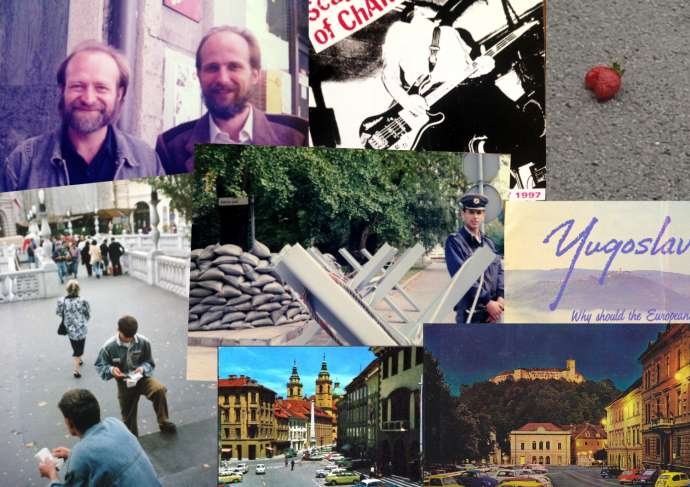"What are you doing?"
Kate was wondering why I was staring at the sidewalk as we sipped wine at Zvezda on Congress Square.
"That strawberry," I told her, likely slipped off someone's dessert at the cafe. I said I was calculating how long it would be before it was stepped on in the summertime, near-constant pedestrian stream. Given fastidious and careful-stepping Slovenes, I figured it stood a good chance of remaining intact.
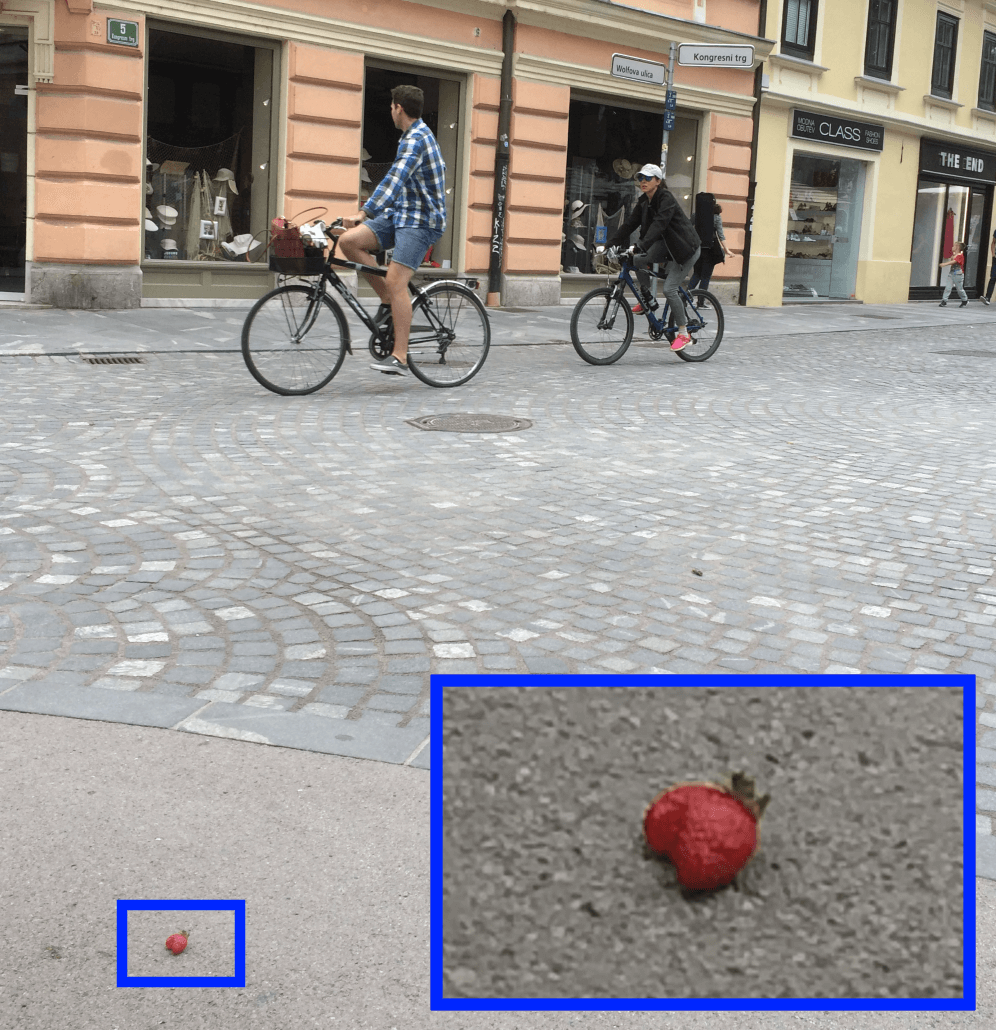
The berry in question
The strawberry scene unfolded during our most recent Ljubljana sojourn, an intermittent story that began in 1991. Tank traps, troops and tension we saw back then at Congress Square, across from Zvezda, are long gone, replaced by the EU, the Euro and stability.
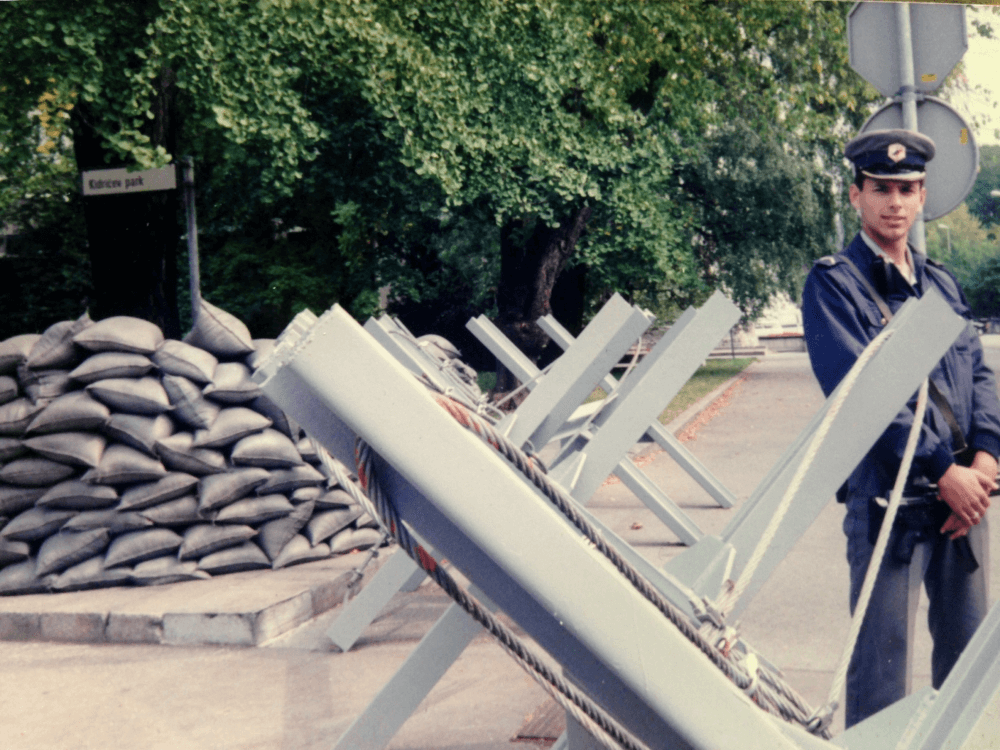
Tank traps in Congress Square, 1991 (Kongresni trg)
Slovenia, mostly unknown then, is now a world destination, attracting ever-growing numbers of visitors, to Bled, Ljubljana, and a slice of the Adriatic. But we worried on this trip, perhaps even facing the dismal prospect of being overwhelmed.
In 1997, I returned to study Slovene, and saw some early changes. In my notebook, I fretted then whether Slovenia could "survive the onslaught of western 'civilization,'" EU membership, and maintain historic links to the Balkans, and their once-fellow Yugoslav citizens. The "fragile beauty and rhythm of the 'club'," which I felt strongly in cozy Ljubljana, could be easily shattered, I wrote, two decades ago.
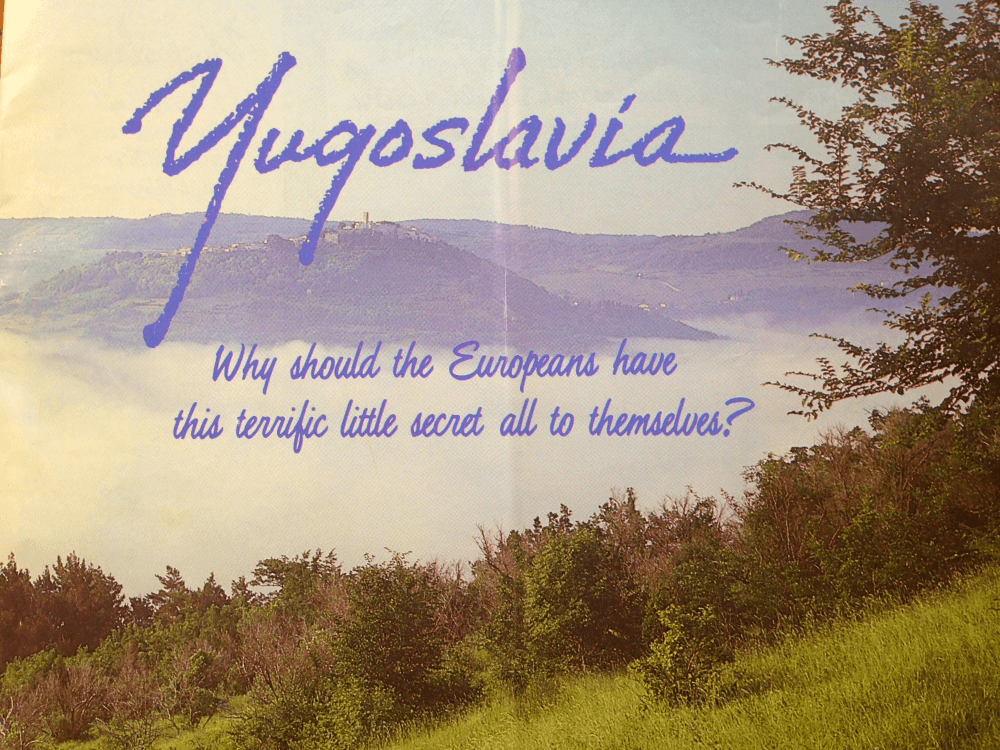
A time before "I feel Slovenia" - "Why should the Europeans have this terrific little secet all to themselves?"
Now, with Slovenia on the map, that seductive "I Feel Slovenia" slogan has worked all too well, no need to be lured. (It came as little surprise that as I finished writing this, Slovenia announced record tourist visits in 2018.) But what is the breaking point? Does a Venice or Amsterdam loom for Ljubljana, and maybe Slovenia, inundated by tourist waves, upending what they had come to experience?
This year, we came in June for three months, my first time as a citizen of Slovenia. Citizenship in the "old country" had always seemed like a crazy pipe dream. But in 2014 I applied, assembling roots records, my multiple newspaper accounts about our repeated visits, and assisted by a Ljubljana friend, a retired lawyer.
All four of my grandparents — John Puc and Johanna Starman, and John Krze and Frances Lustick — migrated a century-plus ago to Rock Springs, an unlikely multi-ethnic, coal-mining town in the high, cold desert of southern Wyoming USA, where I grew up in a sort-of Slovenian enclave. My mother made potica, we bought kisla repa from another family, and kranjska klobasa made by a Slovenian guy who also operated a highway motel. We never missed the yearly "grape festival" at the Slovenski Dom, and one fall Sunday everyone in the family joined my blacksmith grandfather in his basement to grind grapes, shipped to local Slovenes from California.
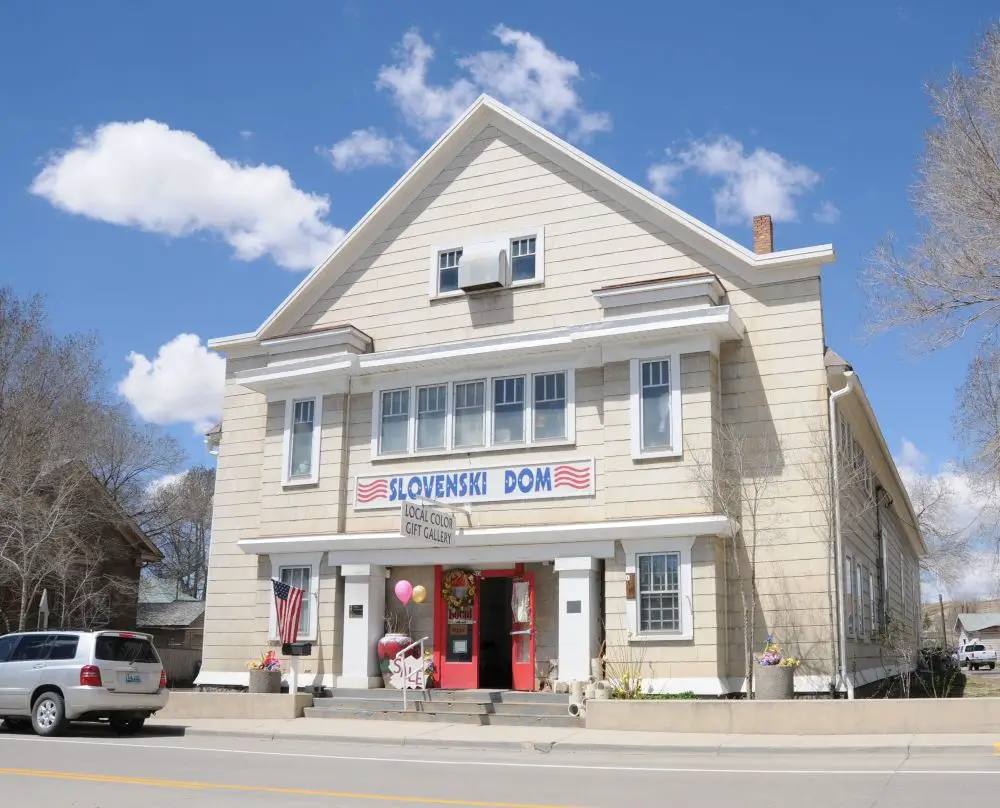
Slovenski Dom, Rock Springs, Wyoming, in 2011. Photo: Yurivict, GNU Free Documentation License
I wrote in my application that I considered citizenship to be fulfilling the dream of one of my grandmothers, who never learned English, always feeling, or so I thought, that one day she'd return to her beloved green Slovenia, leaving that dusty Wyoming desert behind.
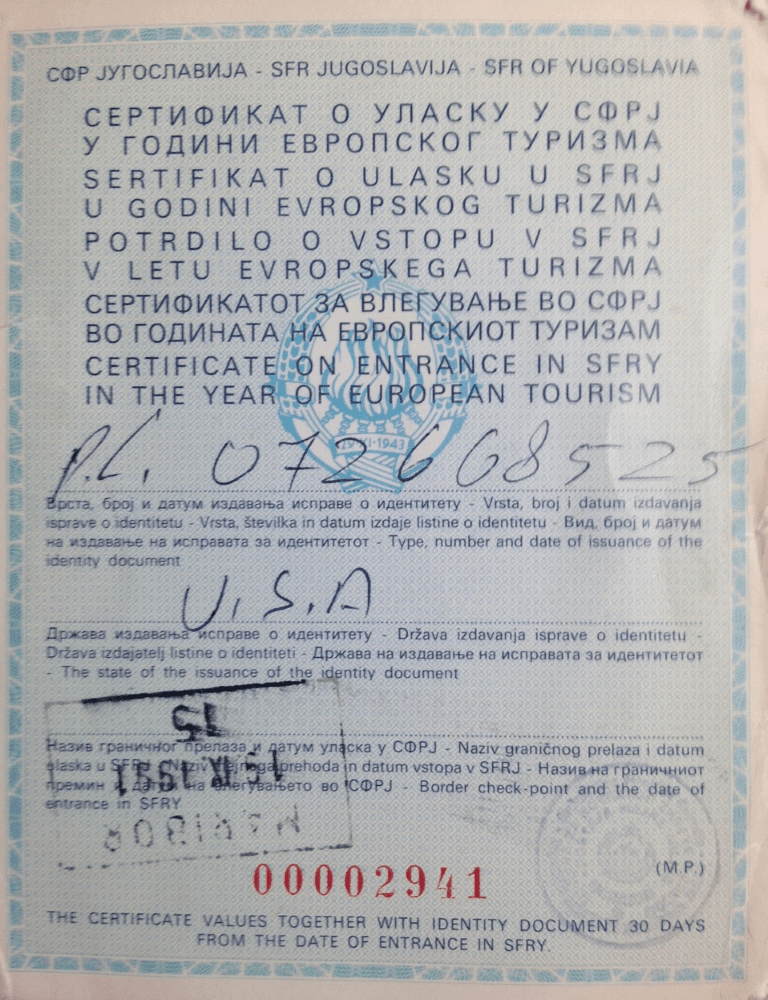
Travel documents from 1991
Back in early 1991, when we had planned our first visit, it was still Yugoslavia. But when we arrived in September, although border guards were handing out SFRY (Socialist Federal Republic of Yugoslavia) "certificates" for travel, almost overnight it had become Slovenia. Despite independence, there was uneasiness. Our friend Stanislav Fortuna stashed gas masks under the couch, at the ready. By the Triple Bridge, currency sellers hawked newly minted Slovenian tolars, beneath Prešeren's statue. The old-line department store, Centromerkur, was still in business (that's where we purchased material Kate only recently used to make kitchen curtains in Albuquerque, New Mexico, where we now reside in the USA). Titova Cesta, the main drag, was virtually empty late nights.
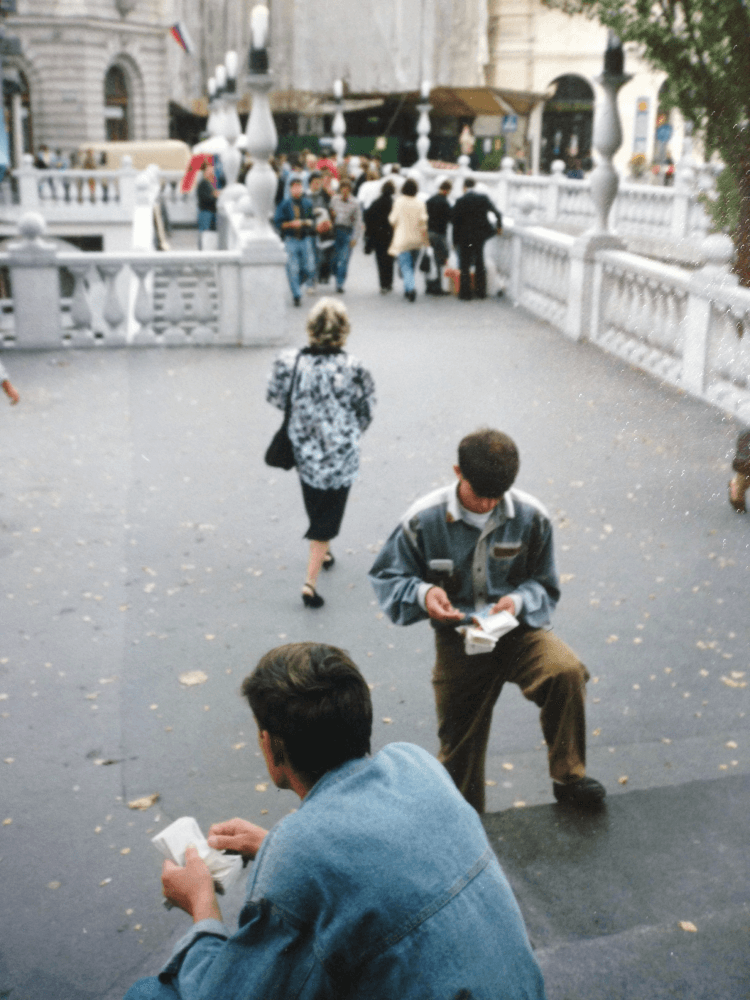
Currency sellers in Prešeren, 1991
That's all a distant memory. Centromerkur has vanished, replaced by the trendy Galerija Emporium. No longer is curtain material made in Slovenia, — no, our seller told us this year — all textiles are from Italy.
On the streets of Ljubljana, meanwhile, a more significant change: Increasingly more, and swifter, cars. Vehicle swarms unnerve bicyclists on narrow roadway bike lanes, so they opt for sidewalks. I call it "outsourcing danger," squeezing hapless pedestrians, forced to watch for oncoming and approaching bikes (and even motorcycles!) on what were sidewalks supposedly reserved for walkers. POZOR! That became our byword as pedestrians, which we are because we prefer foot, bus or train.
Bicyclists have also become more aggressive. They no longer "behave normally," Stanislav says. He's been riding bikes for nearly seven decades, he says, but now feels uncomfortable on the increasingly fast-paced streets.
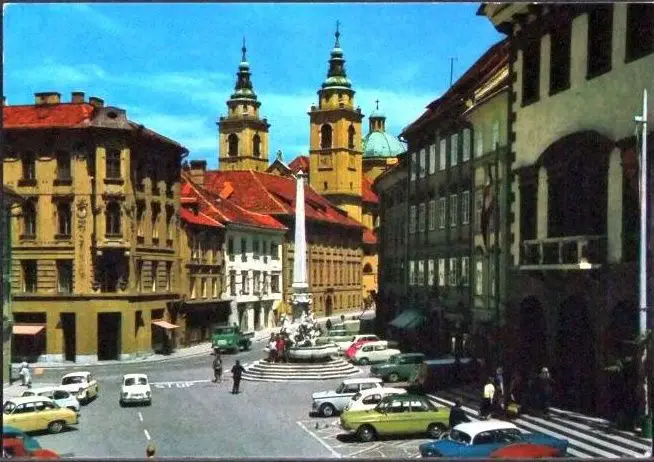
Postcard of Town Square, 1969. Wikimedia, public domain
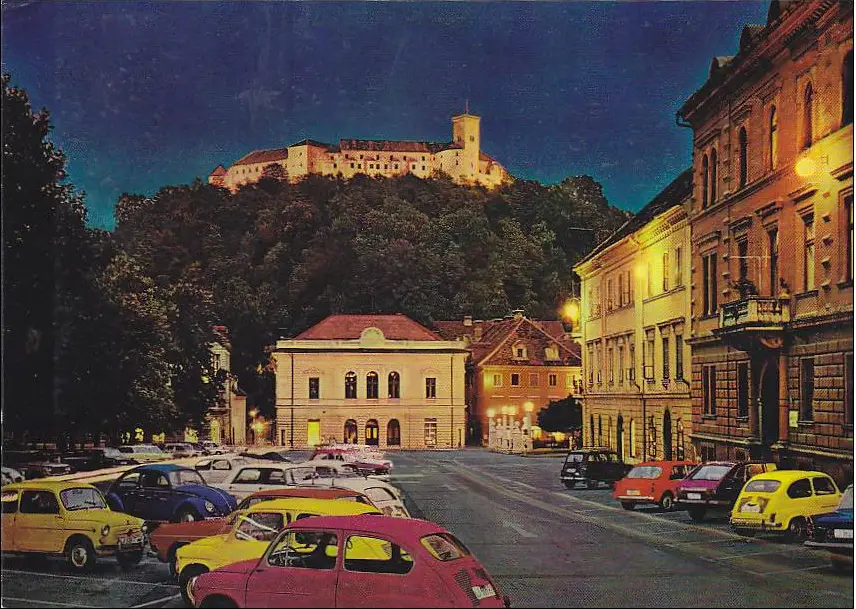
Postcard of Congress Square, 1969. Wikimedia, public domain
Also, less cars! It's a delight to walk the Triple Bridge, passed Prešeren, without dodging smoking autos and lumbering buses, the way we saw it in 1991. Tito's name has been scratched, and now Slovenska Cesta is off-limits to cars (mostly), for buses and walkers only. Now that's a refreshing change, promoting pedestrianism.
But bigger, better, faster — an unsavory USA import — has, alas, afflicted Ljubljana. Thankfully, pedestrian markings on streets still stop cars, though it's smart to glance left and right, just to be sure.
Surprisingly, there was little mention of Melania Trump, the Slovenian-born export to the USA, who left for bigger things and bright New York lights. The one-page In Your Pocket Guide writeup on Sevnica, her birthplace, doesn't even mention her. The only signs of Melania we saw were "first lady" products, tagged to fend off lawsuits she's filed to protect her name.
On the housing front, other changes. When I arrived in 1997 for language study, only three private rooms were for rent, one on Friskovec, where I stayed until relocating to a student dorm near Bezigrad. Now, hostels, hotels and Airbnbs abound, even in Mestni Trg, all of this giving neighborhoods a less-permanent feel.
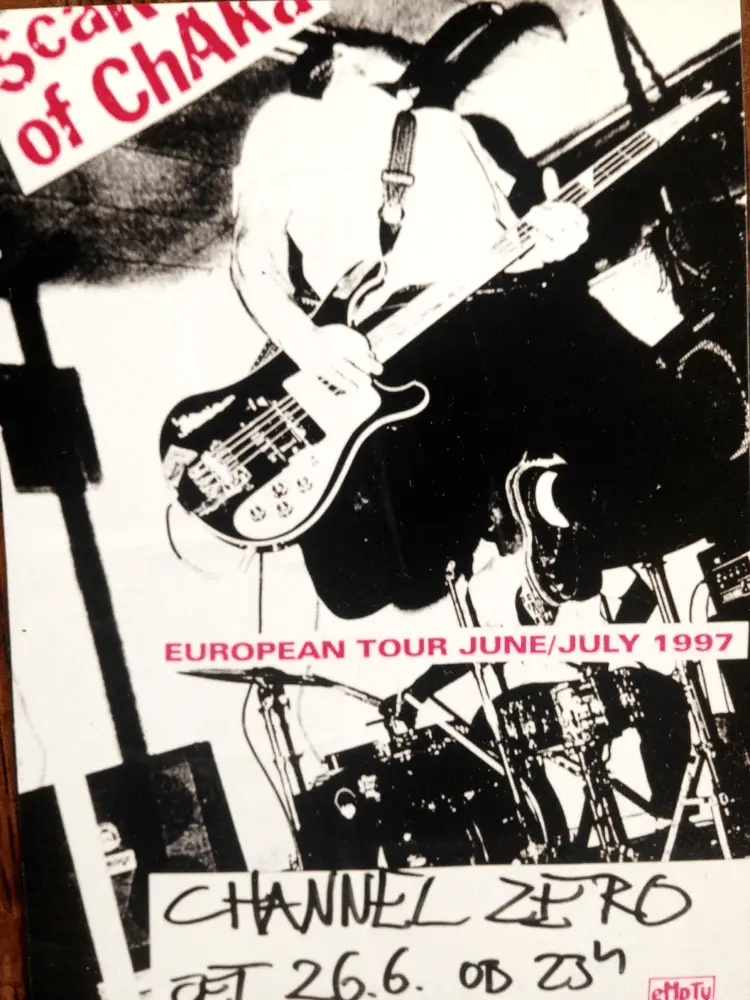
It was when I was at Friskovec that I found Metelkova, in its early raw stages, a time of honest energy and creativity. One late night I heard drums, and wondered what was up behind the walls on the street. The next night, I found out, through a newly opened hole, and happened upon Channel Zero, and a punk band passing through — Scared of Chaka, coincidentally, from Albuquerque, USA. I'm from Wyoming, I told a shocked Dave Hernandez, the band's frontman, who later formed a more widely popular USA band, The Shins.
A 2018 whirl through Metelkova left us feeling differently. Recent fires, a spat of sleazy characters milling about and police wandering around offered a different vibe. At Celica — an abandoned prison in 1997 — cordialness lingered, though one worker lamented that with the takeover by the company managing the Castle, a more mainstream and profit-oriented operation loomed.
Related: Celica - Former Prison, Hostel, & Full Artistic Experience in Ljubljana’s Metelkova
Down by Prešeren, other changes. By August, swelling tourist crowds intent on discovering "Europe's best-kept secret" noticeably thickened, at Trubarjeva, the Triple Bridge and the dragons. The crowded frenzy, unlike the 1990s and even latter-years Ljubljana, was amplified by street performers — a non-local mishmash of maddening, out-of-place bongos, incessant mandolins and disruptive break dancers. We longed for the Romani band that frequented the bridges, in 2014 and 2015, to feel that real Balkan beat, and felt sorry for the drowned-out, lone Slovenian accordionists cast into the sonic shadows.
To experience old-country spirit and heart, we left Ljubljana, for the out-of-the-way. By pure chance, we had met Sonja Bezjak at Carlos Pascual's "Pocket Teater." Even more fortunately, her home was near the Mura River in little-touristed northeast Slovenia, a region Kate by coincidence was reading about in Feri Lainscek's novel, Murisa.
Related: Slovenia's Foreign Entrepreneurs: Carlos Pascual, Working Writer
We drove with her to Ljutomer, where Slovenian language blossomed. Then, to Trate, her home, near an aging castle that housed mental patients where she and other volunteers established a "museum of madness," to focus on perceptions of mental health. We floated the Mura, and met stalwart river-protectors fending off misguided hydropower developers, an effort that's succeeded in getting UNESCO status for the river ecosystem.
Sonja's parents prepared a garden-fresh vegetable dinner, evoking that Slovenia past now receding all too quickly. It was all like a dream, I told them, recalling my grandparents' kitchen table in Rock Springs, my grandmother making lunch for my grandfather who walked from his blacksmith shop.
We returned, and lingered a bit longer in Ljubljana, lamenting our impending departure. One of our last stops was at Zvezda, and my strawberry watch. Alas, fate finally intervened. I glanced away for a moment, and when I looked back, the berry was smashed on the sidewalk.
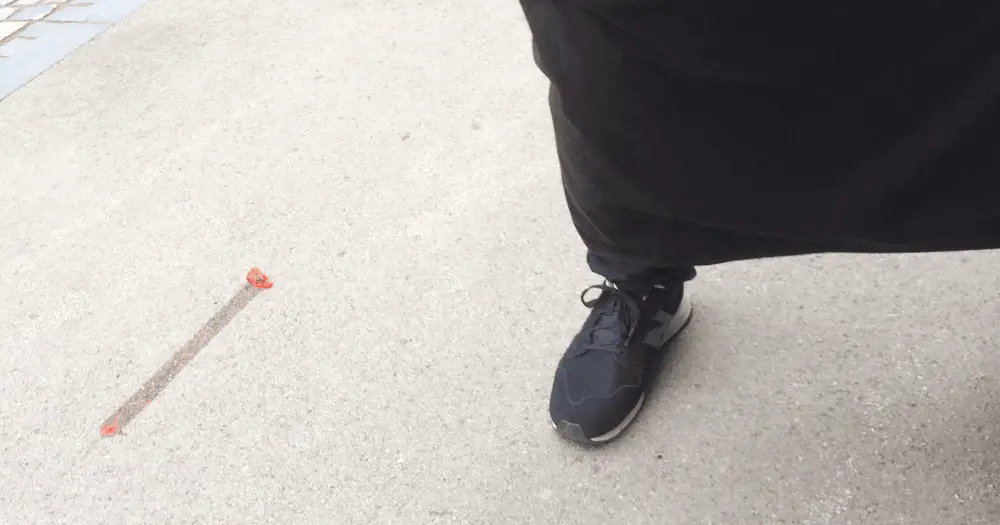
I recalled my sort-of life mantra — nothing, no matter how delicious and wonderful, lasts forever. Likewise, it may be, to our dismay, and my grandmother's dream genes, the way of Ljubljana, and Slovenia. Perhaps I'm wrong, and anyway we're still coming back, to savor ambiance of the "club," deep friendships, and drink from that well of wonderfulness, while we can. But I think I'll just stop telling folks what a swell place it is, lest they may actually all come, eroding our pleasantness.
If there’s a story you’d like to share about Slovenia, then please get in touch at This email address is being protected from spambots. You need JavaScript enabled to view it.

